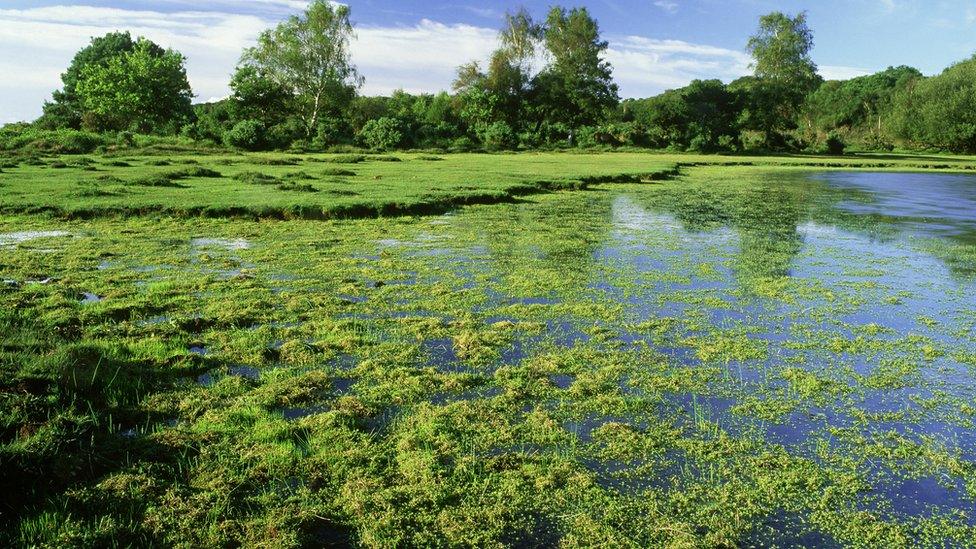Invasive weed removed to help newt population breed
- Published

New Zealand pygmyweed, seen here invading a New Forest pond, can have a devastating impact on native habitats
A highly invasive plant is set to be removed from a nature conservation area in order to help the newt population.
New Zealand pygmy weed reduces the diversity of plants at ponds by taking over and outcompeting native species.
Due to the thick vegetation male newts are unable to be seen performing courtship routines to attract breeding females during the spring.
The work takes place at Pen yr Henblas Quarry on the Halkyn Special Site of Scientific Interest (SSSI), Flintshire.
Natural Resources Wales (NRW) also said the leaves of the plant are unsuitable for newts to lay eggs on.
Great crested newts are threatened by loss of breeding ponds
Great crested newts are a European protected species threatened by loss of breeding ponds.
The plant, also known as Australian swamp stonecrop, was widely available from nurseries and garden centres until it was banned in 2014.
"If left unchecked, New Zealand pygmy weed has the potential to have a devastating impact on the great crested newt population," David Powell, NRW Operations Manager for north east Wales, said.
"The work should hugely benefit the great crested newts and encourage further successful egg-laying and breeding over the coming years."
The weed removal work begins on 19 December, NRW added.
Related topics
- Published12 July 2022
- Published3 July 2018
- Published13 December 2020